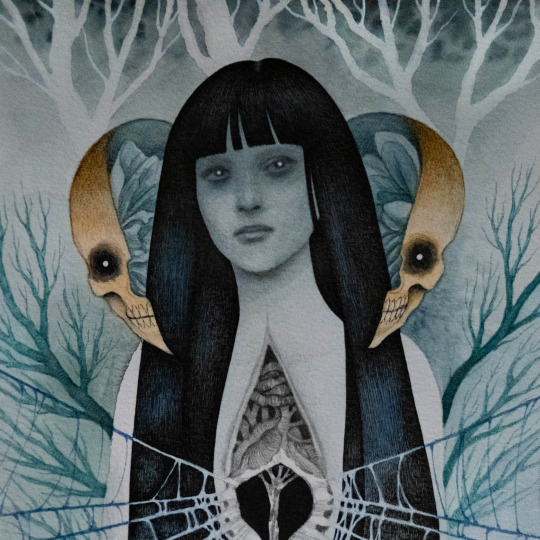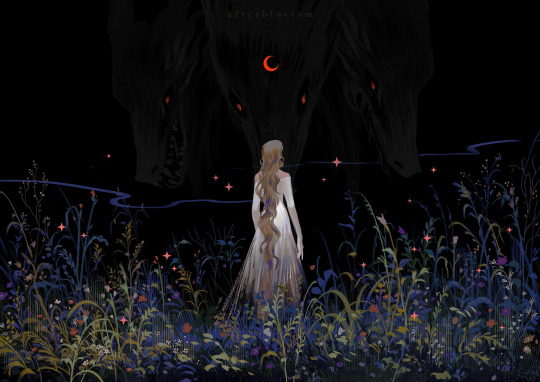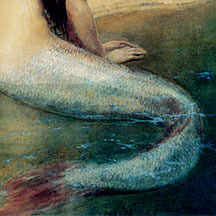🩻🫀 ΘΔ zvir ✷ religious side blog ✷ hedgewitch, folk practitioner, animist, nature & ancestral venerator ✷ devotee to morana ✷ mainly worshipping artemis, aphrodite, demeter and zeus ✷ (fey/it/beast) ✷ lover of death, wife of the earth, fiancee to the sun
Last active 60 minutes ago
Don't wanna be here? Send us removal request.
Text
i don't understand when people complain about someone "working with too many deities". that's like saying the world has too many things. obviously when you're alive you will have to work with life and death, with earth and the sky, sun, desire, mourning, joy, family, letting go, etc etc... someone can find all of this in one or a few deities, but others may feel the need to separate it in different personhoods. i don't see an issue in this
0 notes
Text









king zeus, sun-eyed, goat-horned; leader of the fates, giver of signs, averter of evil
386 notes
·
View notes
Text









hallowed be zeus of the earth, raging, bountiful, wolf-like; giver of good, turner of pollution, averter of ills
44 notes
·
View notes
Text









Αρτεμις - Artemis
"Artemis with shafts of gold (khryselakatos) loves archery and the slaying of wild beasts in the mountains, the lyre also and dancing and strong-voiced song and shady woods and the cities of upright men."
Homerics hymns from theoi / Images from pinterest.
Feel free to send in request for boards!
6 notes
·
View notes
Text
it is probably my ukrainian folk syncretism coming in but i always imagine hades as a green old man with green skin and green clothes and green hair and green beard. and his kingdom to me is green too with high walls made of emerald stone and dark earth and luscious flowers and vegetation. this is how it all comes to me in dreams anyway. persephone is wholly white and she came to me as an old woman too, ive never seen her as a maiden in my dreams (although ive seen her only once and i think she was kind of syncretized with morana)
1 note
·
View note
Photo


Homeric Hymn to Demeter (tr. Hugh G. Evelyn-White)
97 notes
·
View notes
Photo

By Dogma Noir more stuff: instagram.com/dogmanoir
168 notes
·
View notes
Text

Persephone hanging out with the puppies at night.
24K notes
·
View notes
Text
A Spell for Rapid Manifestation
Repost of the example spell from this brainstorm-style tarot magic post.
Not getting a call back from that company? Hangout plans just not coming together? Overdue for lab results? Try this spell and see how you fancy it.
A candle of any size and color (smaller might be better)
The Eight of Wands card from any style of deck
Any taglock to the situation which refuses to progress (resume, lab bill, friend's name and phone number, etc)
An offering (a small one will do)
Prepare your spellcasting space in any way which you desire.
Consecrate, evoke, or greet the Eight of Wands in any way which you prefer.
Light the candle. Plainly explain to the candle that its job is to provide fuel to the Eight of Wands. Tell it to uplift the Eight of Wands on wings of elemental fire, so that it may swiftly accomplish all your goals.
Plainly explain to the Eight of Wands your needs. Express that you would like rapid, if nigh immediate progress on the situation: that whatever should happen next should happen immediately, and that there be no more delays. Explain your taglock: "this is from the lab that won't send me my results, they are the ones who need to act." Etc.
Tell the Eight of Wands that the power of the candle constitutes part of its payment, and that it may keep any excess power which it does not need to complete the spell. Request that it use the elemental fire provided to help further your goals.
Dedicate the offering to the spirit. Place the taglock, card, and candle nearby each other until the candle has finished burning. The candle may be put out and relit later, but it should all be burned (even if the spell manifests before it finishes), as you've already promised it to someone else.
Dispose of any spell remnants as you would normally like to. No special actions need to occur before you return the card to the deck.
835 notes
·
View notes
Text
It was a settlement, known as Medvezhyi Ugol, or Bear Nook, inhabited by people of a false faith - heathens, terrible in their cruelty. And scary was this place, because those people live without restraint and inflict much robbery and bloodshed upon Christians. They do join themselves to the useful effort, when a hunting or a fishing trip is established; these people keep many animals, and satiate themselves with their flesh. The idol they worship is called Volos, the god of Cattle. This idol stands in the middle of a field named after it, and this is where the animals are lead for feeding. A sacred grove was established for this malicious idol, and a volkhv (priest) appointed, and an eternal flame was held there for the sake of this false god, with sacrifices.
The pagans honour the priest much. Still, he can be terribly tormented if the Volos's flame goes out: that very day he is cast out of the grove, a new priest is chosen by vote, and this new priest cuts the old one and burns his corpse as a sacrifice to amuse the wrathful deity. So the ancient enemy of the humankind darkens the hearts of those people, and that is how they live for many years.
The Tale of the Establishment of Yaroslavl
67 notes
·
View notes
Text



Icon of the Theotokos of the Unwilting Bloom
33 notes
·
View notes
Text









I have hidden inside a sea shell but forgotten in which. Now daily I dive, filtering the sea through my fingers, to find myself… “The Sea Shell” by Marin Sorescu
383 notes
·
View notes
Note
Do you have any favorite (heretical or not) prayers?
I certainly do - truly, all genuine prayer and all human capacity for the connection with the divine is breathtaking; one can hardly get through, say, the Book of the Dead, the ancient hymns to the gods, the psalms, or through prayer cards without needing a minute; therefore, what follows are a few examples suiting my present mood, in no particular order and for no particular reason.
A prayer of my own making to the Red Mother:
Crimson Lady, sublime you are in your immodesty. Holy is your throne, and holy is your creation, o Mother of the carnal. You, whose taste is known to the greatest, drunk on blood, intoxicating is the touch of your lips. Your breath is life, and your laughter is the tempest in the hearts of men. Your hand ruins as it creates.
The Orthodox Hail Mary: Virgin Mother of God, rejoice, Blessed Mary, the Lord is with thee. Blessed art thou among women, and blessed is the fruit of thy womb, as you have birthed the Saviour of our souls.
To You, the highest Warlord: To you, the highest Warlord, having been freed from our woes, we, your unworthy servants, o Theotokos, sing a song of praise and gratitude. You, in possession of power unconquerable, free us from every sorrow, so that we may call upon you: rejoice, Bride Unwed!
16 notes
·
View notes
Text
The Great Mother in Her caring form, to the Church, gesturing at the crowd of witches, heretics, and apostates: Do you want any? Okay, I'll take that then, thank you.
24 notes
·
View notes


